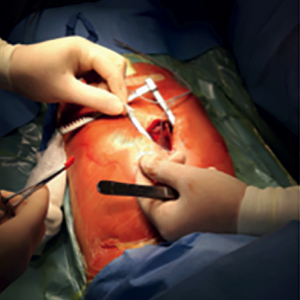Subcutaneous finger cardioverter-defibrillator in low weight paediatric patients: a case series

Submitted: January 15, 2022
Accepted: June 20, 2022
Published: August 5, 2022
Accepted: June 20, 2022
Abstract Views: 991
PDF: 300
Publisher's note
All claims expressed in this article are solely those of the authors and do not necessarily represent those of their affiliated organizations, or those of the publisher, the editors and the reviewers. Any product that may be evaluated in this article or claim that may be made by its manufacturer is not guaranteed or endorsed by the publisher.
All claims expressed in this article are solely those of the authors and do not necessarily represent those of their affiliated organizations, or those of the publisher, the editors and the reviewers. Any product that may be evaluated in this article or claim that may be made by its manufacturer is not guaranteed or endorsed by the publisher.
Similar Articles
- Kenan Yalta, Ertan Yetkin, Tulin Yalta, Systemic inflammation in patients with Takotsubo syndrome: a review of mechanistic and clinical implications , Monaldi Archives for Chest Disease: Vol. 91 No. 2 (2021)
- Afrah Alsomali, Abdullah Eltayeb, Sarah Aldosari, Maie AlShahid, Aly AlSanei, Ali AlEnazy, Olga Vriz, Recurrence of left ventricular pseudoaneurysm after multiple mitral valve replacements , Monaldi Archives for Chest Disease: Vol. 92 No. 2 (2022)
- Aravind Gandhi Periyasamy, Soundappan Kathirvel, Tanveer Rehman, Amarjeet Singh, Demographic and clinical factors associated with early hospital Coronovirus disease 2019 deaths in a low middle income setting: A record-based analysis of 20,641 deaths from India , Monaldi Archives for Chest Disease: Vol. 92 No. 2 (2022)
- Shweta Anand, Anshul Jain, Dipti Gothi, Sameer Vaidya, Rambabu Sah, Prevalence, risk factors and effects of restless legs syndrome in COPD patients , Monaldi Archives for Chest Disease: Vol. 93 No. 1 (2023)
- Rosa Spezzaferri, Maddalena Modica, Vittorio Racca, Vittorino Ripamonti, Monica Tavanelli, Gabriella Brambilla, Maurizio Ferratini, Psychological disorders after coronary artery by-pass surgery: a one-year prospective study , Monaldi Archives for Chest Disease: Vol. 72 No. 4 (2009): Cardiac series
- Floriana Caccamo, Simone Saltini, Enrico Carella, Roberto Carlon, Cristina Marogna, Vito Sava, The measure of effectiveness of a short-term 2-week intensive Cardiac Rehabilitation program in decreasing levels of anxiety and depression , Monaldi Archives for Chest Disease: Vol. 88 No. 1 (2018)
- Andrea Dell'Aquila, Edoardo Sciatti, Enrico Vizzardi, Marco Metra, The brain-heart connection: a multiple sclerosis relapse presenting as Takotsubo Syndrome. A case report and literature review , Monaldi Archives for Chest Disease: Vol. 90 No. 1 (2020)
- Rita Costa, Antonio Esquinas , Predictors of post-COVID syndrome. Getting ready for the future , Monaldi Archives for Chest Disease: Vol. 93 No. 3 (2023)
- Ravi Manglani, Moshe Fenster, Theresa Henson, Ananth Jain, Neil Schluger, Clinical characteristics, imaging, and lung function among patients with persistent dyspnea of COVID-19: a retrospective observational cohort study , Monaldi Archives for Chest Disease: Early Access
- Nicholas Zareifopoulos, Maria Lagadinou, Anastasia Karela, Gerasimos Karantzogiannis, Dimitrios Velissaris, Intubation and mechanical ventilation of patients with COVID-19: what should we tell them? , Monaldi Archives for Chest Disease: Vol. 90 No. 1 (2020)
<< < 13 14 15 16 17 18 19 20 21 22 > >>
You may also start an advanced similarity search for this article.

 https://doi.org/10.4081/monaldi.2022.2203
https://doi.org/10.4081/monaldi.2022.2203





